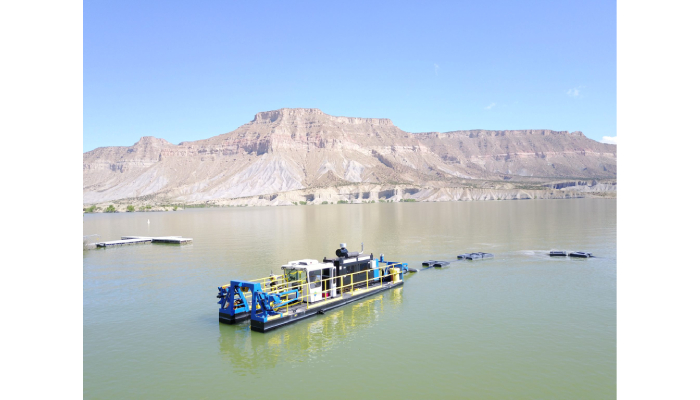Wastewater treatment is a critical process that ensures water is purified and made safe for discharge or reuse. However, over time, wastewater treatment plants and water bodies accumulate sludge and sediments, reducing efficiency and increasing operational costs. This is where wastewater dredging plays a vital role. Wastewater dredging removes accumulated sediments, sludge, and contaminants, improving the overall effectiveness of treatment facilities. In this article, we will explore how wastewater dredging enhances treatment efficiency, its benefits, and its role in maintaining a sustainable environment.
Wastewater Dredging
Wastewater dredge is the process of removing solid waste, sludge, and sediments from treatment lagoons, clarifiers, and other water systems. These sediments can include organic and inorganic materials, heavy metals, nutrients, and harmful contaminants. If left unchecked, the buildup of these materials can lead to inefficient treatment, increased energy consumption, and potential environmental hazards.
Dredging is performed using specialized equipment such as dredgers, vacuum pumps, and hydro-excavation tools, which effectively extract the sludge while minimizing disturbance to the surrounding water system. This process is crucial for maintaining the optimal functionality of wastewater treatment plants.

How Wastewater Dredging Improves Treatment Efficiency?
Enhancing Hydraulic Capacity
Over time, sludge and sediment accumulation reduce the capacity of wastewater treatment facilities. This limits water flow, increases retention times, and affects overall treatment performance. Dredging removes these obstructions, restoring the system’s hydraulic efficiency and allowing for better processing of incoming wastewater.
Improving Aeration and Oxygen Levels
Aeration is a key step in biological wastewater treatment, as it supports the growth of beneficial microorganisms that break down contaminants. When sludge accumulates in aeration basins, it reduces oxygen transfer efficiency, leading to poor treatment performance. By dredging out excess sludge, oxygen distribution improves, enhancing microbial activity and speeding up the decomposition of organic matter.
Reducing Energy Consumption
Excessive sludge buildup forces pumps, aerators, and other treatment equipment to work harder, leading to higher energy costs. Dredging removes excess sediments, allowing equipment to operate more efficiently with less strain. This results in significant energy savings and lower operational costs for wastewater treatment plants.
Preventing Algal Blooms and Odor Issues
Nutrient-rich sludge, especially those high in nitrogen and phosphorus, can lead to excessive algal growth in wastewater ponds and reservoirs. Algal blooms can release toxins and cause oxygen depletion, negatively affecting water quality. Additionally, stagnant sludge can produce foul odors due to anaerobic decomposition. Wastewater dredging helps mitigate these problems by removing nutrient-laden sediments and improving overall water quality.
Extending the Lifespan of Treatment Infrastructure
Accumulated sediments can cause corrosion, blockages, and mechanical failures in wastewater treatment facilities. Regular dredging prevents damage to pipes, tanks, and pumps, reducing the need for costly repairs and prolonging the lifespan of critical infrastructure.
Methods of Wastewater Dredging
Several dredging methods are used in wastewater treatment, depending on the nature of the sludge and the system’s requirements. The most common methods include:
Mechanical Dredging
Mechanical dredging involves using backhoes, clamshells, or excavators to physically remove sediments. This method is effective for large-scale wastewater treatment plants but can be labor-intensive and may require dewatering of lagoons before operation.
Hydraulic Dredging
Hydraulic dredging utilizes pumps to suction sludge and water from the treatment system. The extracted material is then processed through dewatering systems such as centrifuges or filter presses. This method is ideal for continuous dredging operations and minimizes disruptions.
Vacuum Dredging
Vacuum dredging is used for removing fine sludge layers in sensitive environments. It employs suction-based tools to extract sediments without disturbing surrounding water quality, making it a preferred method for small-scale wastewater treatment facilities.
Auger Dredging
Auger dredging uses rotating blades to loosen sediments before suctioning them out. This method is particularly effective for removing compacted sludge in lagoons and basins.
Benefits of Regular Wastewater Dredging
Implementing a routine dredging schedule offers numerous advantages for wastewater treatment facilities, including:
- Improved Water Quality: By removing pollutants and organic matter, dredging enhances the quality of treated water before discharge or reuse.
- Compliance with Regulations: Many environmental agencies require wastewater treatment plants to maintain specific water quality standards. Dredging helps meet these compliance requirements.
- Cost Savings: Preventive dredging minimizes emergency maintenance and reduces the risk of system failure, leading to long-term cost savings.
- Enhanced Treatment Efficiency: Removing excess sludge allows treatment processes to work more effectively, ensuring optimal removal of contaminants.
Challenges and Considerations in Wastewater Dredging
While wastewater dredging is essential for treatment efficiency, it also presents some challenges:
- Disposal of Dredged Material: Proper disposal or treatment of dredged sludge is necessary to prevent secondary pollution.
- Equipment and Labor Costs: Depending on the size of the treatment plant, dredging can require significant investment in equipment and skilled personnel.
- Environmental Impact: Dredging must be conducted carefully to avoid disrupting aquatic ecosystems or releasing contaminants back into the water column.
Conclusion
Wastewater dredging is a crucial process for maintaining the efficiency and longevity of treatment facilities. By removing accumulated sediments, improving aeration, reducing energy consumption, and preventing system failures, dredging plays a key role in optimizing wastewater treatment. Regular dredging not only enhances the performance of treatment plants but also contributes to better environmental sustainability and regulatory compliance.
As wastewater treatment demands continue to grow, integrating dredging as part of routine maintenance will ensure that facilities operate efficiently, minimize operational costs, and provide cleaner water for communities and ecosystems. Investing in the right dredging methods and equipment is essential for wastewater management success.
0 Comments